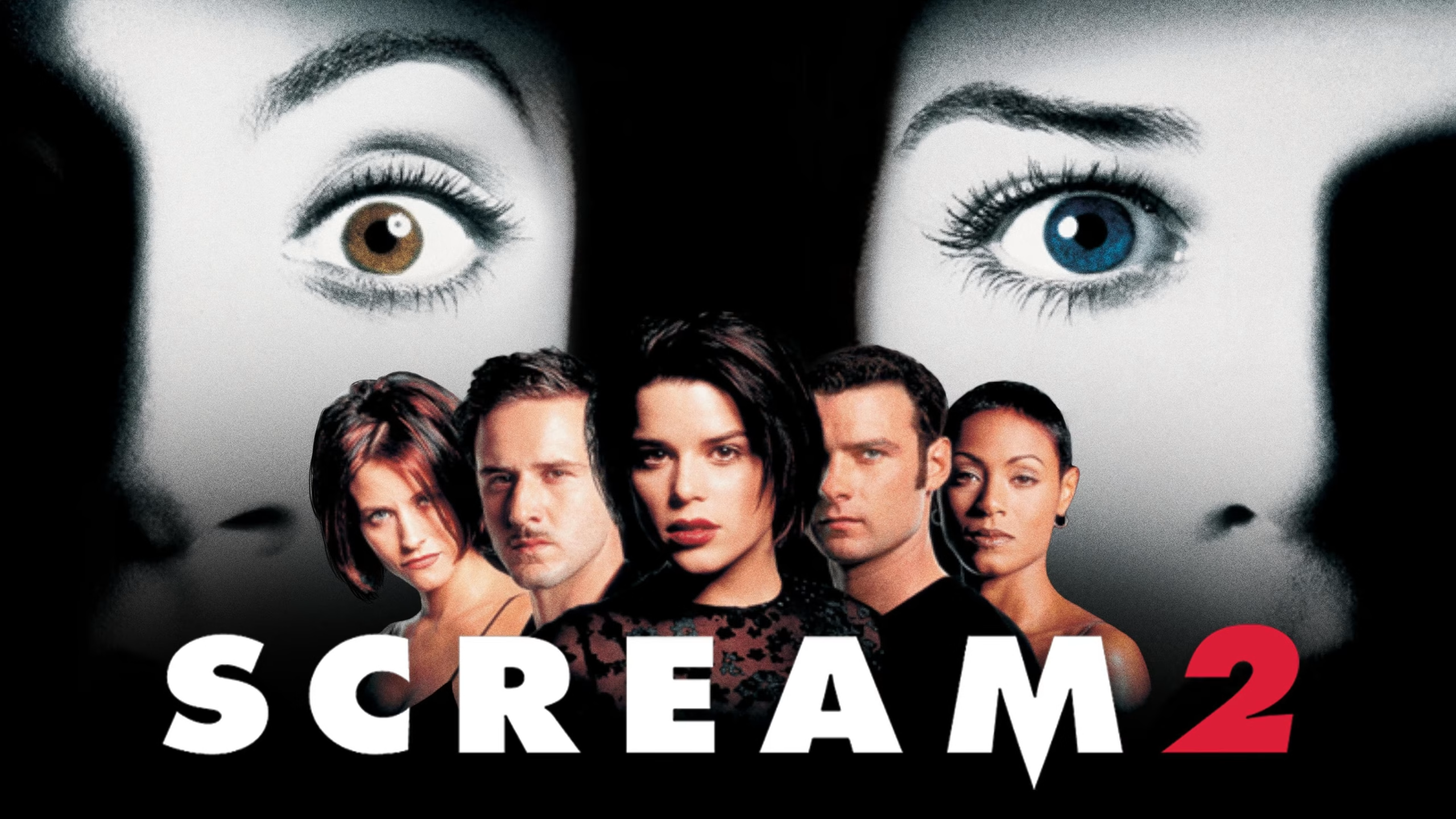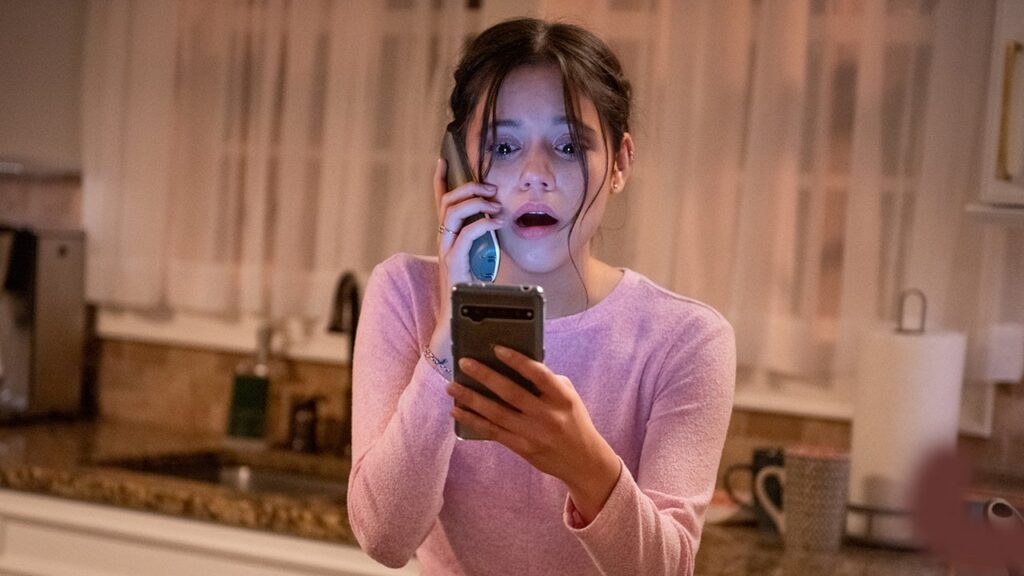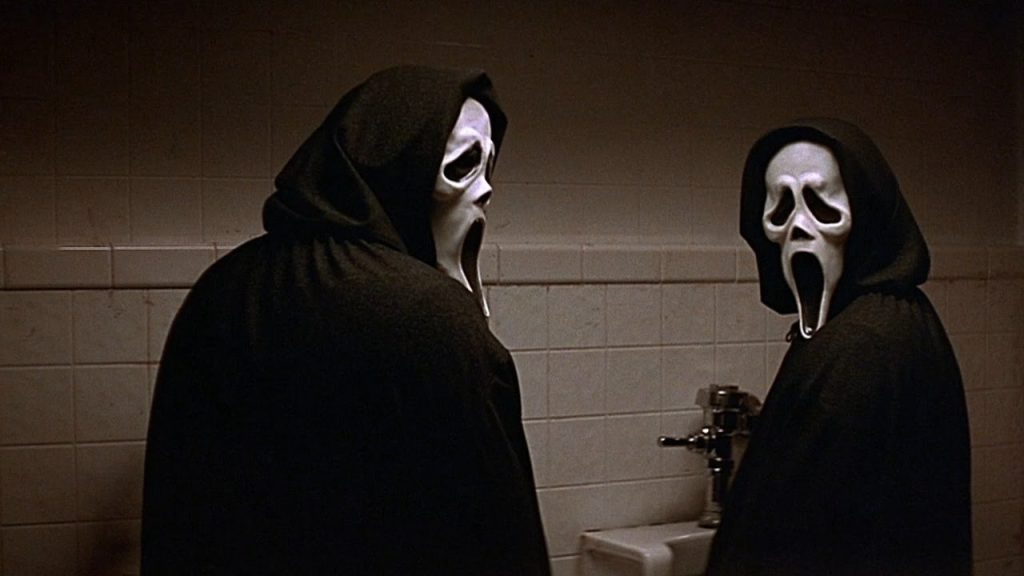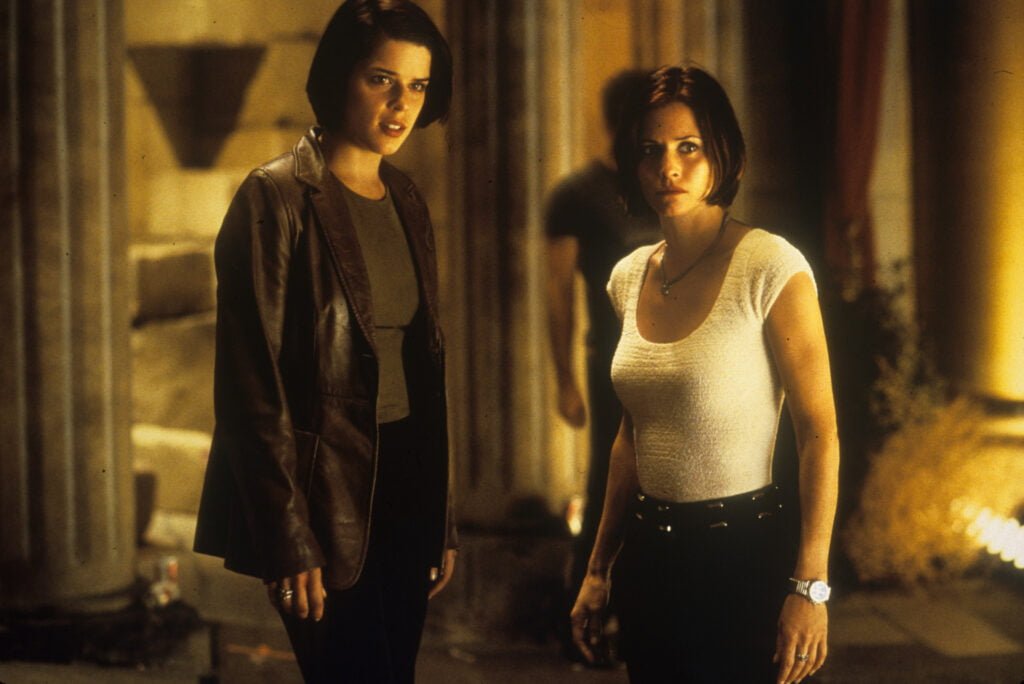Editorials
Transformed: A Trans Take on ‘Suspiria’ & ‘Possessor’

It’s a hard time to be a trans person. Not only do we have to sift through the identities projected upon us to discover our true selves, but every day an onslaught of anti-trans propaganda and legislature is lobbed in our direction to effectively ban trans individuals from public life. It is cruel beyond any sane measure to target self-expression when trans acceptance is an invigorating feeling. Discovering one’s transness is scary, yet it is by looking past societal expectations of gender and sexuality that we discover our true power and potential.

Suspiria (2018): Trans Identity as Radical Transformation
2018’s Suspiria is a film about how society bends self-expression into the political and how refusing conformity is in itself an act of radical transformation. The film’s protagonist Susie Bannion (Dakota Johnson) comes from a conservative Mennonite community, yet is drawn to Berlin, where the Markos Dance Academy resides. Once at the academy, Susie is swept up into the studio’s politics, as her peers fall out of favor with the studio’s lead instructor Madame Blanc (Tilda Swinton). Blanc quickly elevates her to the position of lead dancer as the other dance instructors dispose of her competitors using witchcraft.
The coven believes Susie will serve as a means for extending the life of the academy’s director Madame Markos. However, in an act of defiance, Susie interrupts their ritual, digging her hands into her chest and tearing it open to reveal a hidden, gasping organ. She breathes, her eyes falling shut in pained bliss. When she opens her eyes, Susie is transformed by the knowledge of who she is—a reincarnation of the coven’s deity, Mother Suspiriorum—and is empowered to destroy the coven that betrayed her.
Discovering My Trans Identity
Back when I first saw Suspiria (2018), I had accepted that I was queer, but what exactly that meant, I was unsure. Several years later, I awoke in the middle of the night, anxious with a knot in my stomach. I mulled over the source of my discomfort –a coworker’s insistence at calling me ‘man’ instead of my name—and came to a conclusion I had avoided considering: that I wasn’t a ‘man’, but rather, someone who didn’t align with my assigned gender. Much like how Susie’s power becomes undeniable once she awakens her true self, this revelation was one I knew I couldn’t force back inside myself. I had finally seen who I truly was and knew I couldn’t deny it.

Possessor (2020): Identity and Loss in a Sci-Fi Horror Lens
Brandon Cronenberg’s Possessor (2020) is a sci-fi horror film rooted in the existential, as Tasya (Andrea Riseborough), a hitman who biologically splices and possesses the bodies of those near and dear to her targets, finds the boundary between herself and the inhabited blurred. Tasya exists in a personal and professional liminal space, as her handler Girder (Jennifer Jason Leigh), urges her to assassinate higher-priority targets. Yet, she is drawn to the domestic life she once shared with her son and ex-husband. Despite this dissonance, Tasya agrees to inhabit the body of Colin (Christopher Abbott), the fiancé of a powerful tech mogul’s daughter. Tasya is warned of the risks of this operation, with Girder warning her that the implant that allows her to inhabit Colin’s body is designed to quickly degrade, requiring her to do daily calibrations to prevent her from losing grasp of her true self as she completes the hit.
As Tasya assumes Colin’s life, she immediately struggles to separate the personal and professional, regularly following her son and ex-husband as Colin despite the risk of miscalibration. While Tasya is tasked to kill Colin’s future father-in-law and then Colin himself, Tasya cannot kill herself and return to her own body, forcing her to go on the run, miss her regular calibrations, and lose track of where she begins and Colin ends. As the implant in Colin’s brain degrades, he fights for control of his body. Believing Tasya is responsible for frying his brain, Colin seizes control, breaks into her family home, and mistakenly slaughters her family as he wrestles with Tasya’s psyche for control.
The Cost of Losing Authenticity
While Possessor isn’t explicitly a trans film, it digs into themes of identity and the consequences of losing one’s true self. Tasya must not only take control of her victims’ bodies but also displace their consciousness. She reduces her targets to tools to achieve an end, but when Colin fights back, she wrestles control back by causing him to question if they are responsible for the deaths of his loved ones. This constant questioning of where the boundary between Tasya and Colin is causes it to blur, resulting in mutual destruction as their loved ones meet violent ends.
Weaponizing Identity: Transness in the Political Crosshairs
As trans people, the confusion that arises by questioning our gender is often weaponized against us by the right. Discovering one’s identity and choosing to express oneself because of these revelations is framed as mental illness, allowing conservative politicians to villainize and scapegoat trans people as dangerous, violent, and deserving of a sanitarium. Possessor shows what happens when one’s identity is torn away from them. As Tasya seizes Colin’s own body, she effectively strips him of his autonomy to kill his loved ones. Yet, the most horrific aspect of this method of assassination is that Colin’s loved ones believe him to be responsible for their deaths in their final moments. Tasya takes everything Colin sees himself as and wields it as a weapon, using his identity to create a convincing narrative to fit her agency’s purposes, much like conservative politicians constantly seek a narrative to demonize trans and LGBTQIA+ populations.

The Power of Self-Discovery: Trans Resilience in Film and Life
Much like Susie Banon’s transformation began with blood and suffering, searching inwards and discovering that a person’s true self isn’t the same as the one projected upon them is painful. But that discovery can be invigorating, making the transformed feel like they are just now seeing the world for the first time. To be trans requires a great deal of bravery and perseverance, yet we are politicized and weaponized as false narratives equate transness with the violent destruction of traditional family values.
Possessor is a film where the creation of untrue narratives and the slander of one’s true self results in equally devastating consequences for the perpetrator as the victim; however, while Tasya’s actions come back around to bite her, the enemies of the so-called trans agenda align themselves with fascism and illogical fallacies, hiding behind layers of privilege, wealth, and systematic loopholes. As trans people, we can only fight so hard without giving our opponents more fuel for their propaganda machine. Still, regardless of trans legislation throughout the world, our acknowledgment of our true selves and the power that comes from it is something they can’t take from us.
Editorials
‘The Woman in Black’ Remake Is Better Than The Original

As a horror fan, I tend to think about remakes a lot. Not why they are made, necessarily. That answer is pretty clear: money. But something closer to “if they have to be made, how can they be made well?” It’s rare to find a remake that is generally considered to be better than the original. However, there are plenty that have been deemed to be valuable in a different way. You can find these in basically all subgenres. Sci-fi, for instance (The Thing, The Blob). Zombies (Dawn of the Dead, Evil Dead). Even slashers (The Texas Chainsaw Massacre, My Bloody Valentine). However, when it comes to haunted house remakes, only The Woman in Black truly stands out, and it is shockingly underrated. Even more intriguingly, it is demonstrably better than the original movie.
The Original Haunted House Movie Is Almost Always Better
Now please note, I’m specifically talking about movies with haunted houses, rather than ghost movies in general. We wouldn’t want to be bringing The Ring into this conversation. That’s not fair to anyone.
Plenty of haunted house movies are minted classics, and as such, the subgenre has gotten its fair share of remakes. These are, almost unilaterally, some of the most-panned movies in a format that attracts bad reviews like honey attracts flies.
You’ve got 2005’s The Amityville Horror (a CGI-heavy slog briefly buoyed by a shirtless, possessed Ryan Reynolds). That same year’s Dark Water (one of many inert remakes of Asian horror films to come from that era). 1999’s The House on Haunted Hill (a manic, incoherent effort that millennial nostalgia has perhaps been too kind to). That same year there was The Haunting (a manic, incoherent effort that didn’t even earn nostalgia in the first place). And 2015’s Poltergeist (Remember this movie? Don’t you wish you didn’t?). And while I could accept arguments about 2001’s THIR13EN Ghosts, it’s hard to compete with a William Castle classic.
The Problem with Haunted House Remakes
Generally, I think haunted house remakes fail so often because of remakes’ compulsive obsession with updating the material. They throw in state-of-the-art special effects, the hottest stars of the era, and big set piece action sequences. Like, did House on Haunted Hill need to open with that weird roller coaster scene? Of course it didn’t.
However, when it comes to haunted house movies, bigger does not always mean better. They tend to be at their best when they are about ordinary people experiencing heightened versions of normal domestic fears. Bumps in the night, unexplained shadows, and the like. Maybe even some glowing eyes or a floating child. That’s all fine and dandy. But once you have a giant stone lion decapitating Owen Wilson, things have perhaps gone a bit off the rails.

The One Big Exception is The Woman in Black
The one undeniable exception to the haunted house remake rule is 2012’s The Woman in Black. If we want to split hairs, it’s technically the second adaptation of the Susan Hill novel of the same name. But The Haunting was technically a Shirley Jackson re-adaptation, and that still counts as a remake, so this does too.
The novel follows a young solicitor being haunted when handling a client’s estate at the secluded Eel Marsh House. The property was first adapted into a 1989 TV movie starring Adrian Rawlings, and it was ripe for a remake. In spite of having at least one majorly eerie scene, the 1989 movie is in fact too simple and small-scale. It is too invested in the humdrum realities of country life to have much time to be scary. Plus, it boasts a small screen budget and a distinctly “British television” sense of production design. Eel Marsh basically looks like any old English house, with whitewashed walls and a bland exterior.
Therefore, the “bigger is better” mentality of horror remakes took The Woman in Black to the exact level it needed.

The Woman in Black 2012 Makes Some Great Choices
2012’s The Woman in Black deserves an enormous amount of credit for carrying the remake mantle superbly well. By following a more sedate original, it reaches the exact pitch it needs in order to craft a perfect haunted house story. Most appropriately, the design of Eel Marsh House and its environs are gloriously excessive. While they don’t stretch the bounds of reality into sheer impossibility, they completely turn the original movie on its head.
Eel Marsh is now, as it should be, a decaying, rambling pile where every corner might hide deadly secrets. It’d be scary even if there wasn’t a ghost inside it, if only because it might contain copious black mold. Then you add the marshy grounds choked in horror movie fog. And then there’s the winding, muddy road that gets lost in the tide and feels downright purgatorial. Finally, you have a proper damn setting for a haunted house movie that plumbs the wicked secrets of the wealthy.
Why The Woman in Black Remake Is an Underrated Horror Gem
While 2012’s The Woman in Black is certainly underrated as a remake, I think it is even more underrated as a haunted house movie. For one thing, it is one of the best examples of the pre-Conjuring jump-scare horror movie done right. And if you’ve read my work for any amount of time, you know how positively I feel about jump scares. The Woman in Black offers a delectable combo platter of shocks designed to keep you on your toes. For example, there are plenty of patient shots that wait for you to notice the creepy thing in the background. But there are also a number of short sharp shocks that remain tremendously effective.
That is not to say that the movie is perfect. They did slightly overstep with their “bigger is better” move to cast Daniel Radcliffe in the lead role. It was a big swing making his first post-Potter role that of a single father with a four-year-old kid. It’s a bit much to have asked 2012 audiences to swallow, though it reads slightly better so many years later.
However, despite its flaws, The Woman in Black remake is demonstrably better than the original. In nearly every conceivable way. It’s pure Hammer Films confection, as opposed to a television drama without an ounce of oomph.
Editorials
Is ‘Scream 2’ Still the Worst of the Series?

There are only so many times I can get away with burying the lede with an editorial headline before someone throws a rock at me. It may or may not be justified when they do. This article is not an attempt at ragebaiting Scream fans, I promise. Neither was my Scream 3 article, which I’m still completely right about.
I do firmly believe that Scream 2 is, at the very least, the last Scream film I’d want to watch. But what was initially just me complaining about a film that I disregard as the weakest entry in its series has since developed into trying to address what it does right. You’ve heard of the expression “jack of all trades, master of none”, and to me Scream 2 really was the jack of all trades of the franchise for the longest time.
It technically has everything a Scream movie needs. Its opening is great, but it’s not the best of them by a long shot. Its killers are unexpected, but not particularly interesting, feeling flat and one-dimensional compared to the others. It has kills, but only a few of them are particularly shocking or well executed. It pokes fun at the genre but doesn’t say anything particularly bold in terms of commentary. Having everything a Scream movie needs is the bare minimum to me.
But the question is, what does Scream 2 do best exactly? Finding that answer involves highlighting what each of the other sequels are great at, and trying to pick out what Scream 2 has that the others don’t.

Scream 3 Is the Big Finale That Utilizes Its Setting Perfectly
Scream as a series handily dodges the trap most horror franchises fall into: rehashing and retreading the same territory over and over. That’s because every one of its films are in essence trying to do something a little different and a little bolder.
Scream 3 is especially bold because it was conceived, written, and executed as the final installment in the Scream series. And it does that incredibly well. Taking the action away from a locale similar to Woodsboro, Scream 3 tosses our characters into the frying pan of a Hollywood film production. Despite its notorious number of rewrites and script changes (one of which resulted in our first solo Ghostface), it still manages to be a perfect culmination of Sidney Prescott’s story.
I won’t repeat myself too much (go read my previous article on the subject), but 3 is often maligned for as good a film as it turned out to be. And for all of its clunkier reveals, and its ghost mom antics, it understands how to utilize its setting and send its characters off into the sunset right.
Scream 4’s Meta Commentary Wakes Scream from a Deep Sleep
As Wes Craven’s final film, Scream 4 has a very special place in the franchise. It was and still is largely adored for bringing back the franchise from a deep 11-year sleep. With one of the craziest openings in any horror film, let alone a Scream film, it sets the tone for a bombastic return and pays off in spades with the journey it takes us on.
Its primary Ghostface Jill Roberts is a fan favorite, and for some people, she is the best to ever wear the mask. Its script is the source of many memorable moments, not the least of which is Kirby’s iconic rapid-fire response to the horror remakes question. And most importantly, it makes a bold and surprisingly effective return for our main trio of Sidney, Dewey, and Gale, whose return didn’t feel trite or hammy when they ended up coming back to Woodsboro for more.
Craven’s work on 4 truly understands the power its predecessors had exerted on the horror genre, both irreverent in its metacommentary and celebratory of the Scream series as a whole. The film is less of a love letter to the genre and more of a kicking down of the door to remind people what Scream is about. 4’s story re-established that Scream isn’t going away, no matter how long it takes for another film, and no matter how many franchises try to take its place.

Scream 5 & 6 Is Radio Silence’s Brutal and Bloody Attitude Era
Put simply, Scream 5 and 6’s strong suit was not its characters. It was not its clever writing. The Radio Silence duology in the Scream series excelled in one thing: beating the hell out of its characters.
Wrestling fans (of which there is an unsurprising amount of crossover with horror fans) will know why I call it the Attitude Era. Just like WWE’s most infamous stretch of history, Radio Silence brought something especially aggressive to their entries. And it’s because these films were just brutal. Handing the reins to the series, Bettinelli-Olpin and Gillet gifted a special kineticism to the classic Scream chase sequences, insane finales, and especially its ruthless killers.
All five of the Ghostfaces present in 5 and 6 are the definition of nasty. They’re unrelenting, and in my humble opinion, the freakiest since the original duo of Stu Macher and Billy Loomis. Getting to hear all the air get sucked out of the room as Dewey is gutted like a fish in 5 was still an incredible moment to experience in theatres, and it’s something I don’t think would have happened if the films were any less mean and any less explosively violent.

So, What Does Scream 2 Do Best Exactly?
So now, after looking at all these entries and all of their greatest qualities, what does Scream 2 have that none of the others do? What must I concede to Scream 2?
Really great character development.
Film is a medium of spectacle most of the time, and this is reflected in how we critique and compliment them. It affects how we look back on them, sometimes treating them more harshly than they deserve because they don’t have that visual flash. But for every ounce of spectacle Scream 2 lacks, I have to admit, it does an incredible job of developing Sidney Prescott as a character.
On a rare rewatch, it’s clear Neve Campbell is carrying the entirety of Scream 2 on her back just because of how compelling she makes Sidney. Watching her slowly fight against a tide of paranoia, fear, and distrust of the people around her once more, watching her be plunged back into the nightmare, is undeniably effective.
It’s also where Dewey and Gale are really cemented as a couple, and where the seeds of them always returning to each other are planted. Going from a mutual simmering disrespect to an affectionate couple to inseparable but awkward and in love is just classic; two people who complete each other in how different they are, but are inevitably pulled back and forth by those differences, their bond is one of the major highlights throughout the series.

Maybe All the Scream Films Are Just Good?
These three characters are the heart of the series, long after they’ve been written out. I talk a big game about how Scream 3 is the perfect ending for the franchise, but I like to gloss over the fact that Scream 2 does a lot of the legwork when it comes to developing the characters of Dewey, Gale, and especially Sidney.
Without 2, 3 just isn’t that effective when it comes to giving Sidney her long deserved peace. Without 2, the way we see Sidney’s return in 4 & 5 doesn’t hit as hard. All of the Scream movies owe something to Scream 2 in the same way they owe something to the original Scream. I think I’ve come to a new point of view when it comes to the Scream franchise: maybe there is no bad entry. Maybe none of them have to be the worst. Each one interlinks with the others in their own unique way.
And even though I doubt I will ever really love Scream 2, it has an undeniable strength in its character writing that permeates throughout the whole franchise. And that at the very least keeps it from being the worst Scream film.























